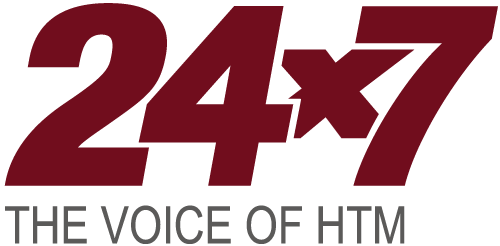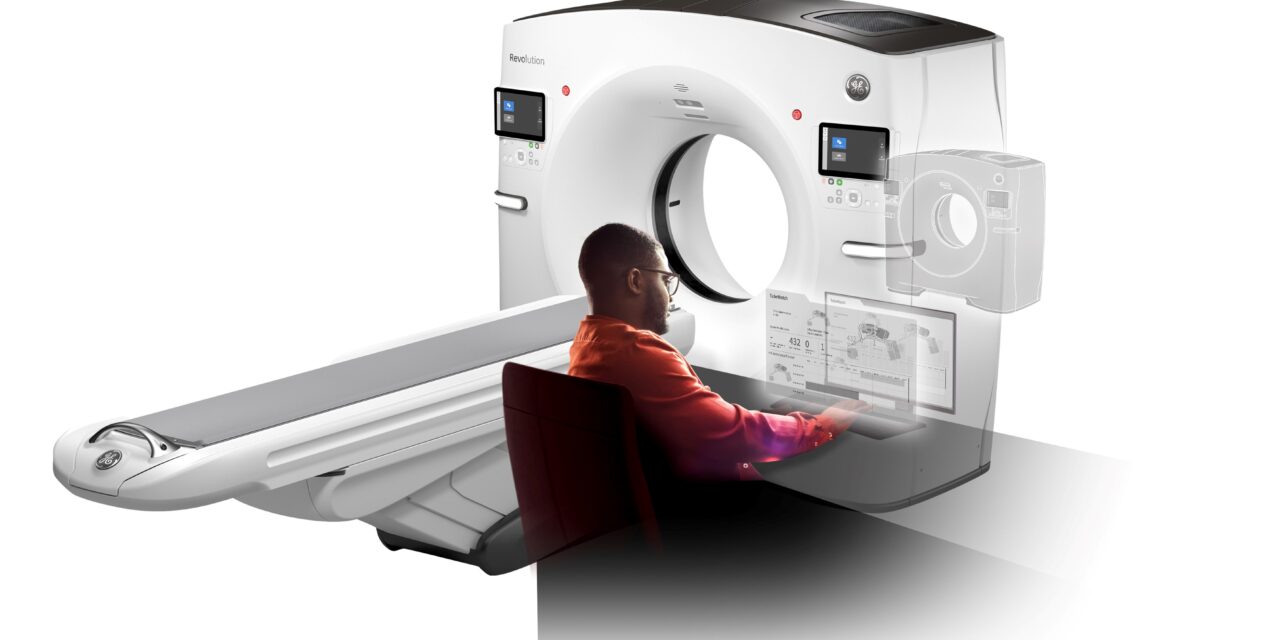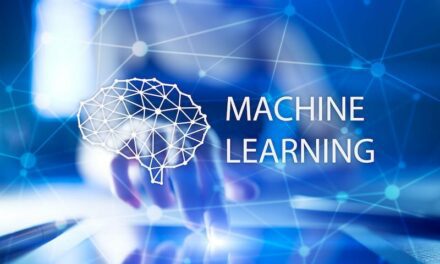From artificial intelligence-assisted troubleshooting to predictive platforms, vendors and end-users share what’s working—and what it takes to get there.
By Alyx Arnett
Imagine a CT scanner requesting a tube swap next Tuesday—before an unexpected failure racks up significant downtime costs. Just a few years ago, that kind of foresight felt futuristic. Now, it’s a reality. Artificial intelligence (AI)-driven platforms are ingesting live telemetry, error logs, and service histories to forecast failures days in advance.
AI tools are also helping technicians troubleshoot faster, reduce field visits, and standardize service delivery. As devices become more complex and experienced staff harder to find, stakeholders say these tools are becoming essential to keep equipment running and scale expertise across the workforce.
“HTM teams now view AI not as a future add-on but as a critical part of proactive service strategies,” says Assaf Melochna, president and co-founder of Aquant, a provider of an AI platform built for service professionals.
Various AI tools are now on the market, offering different approaches to service support. Vendors explain how their platforms work, while end-users highlight performance metrics and what it takes to implement them successfully.
From Guesswork to Guidance
GE HealthCare’s service platforms have evolved over the past two decades from early remote log-in tools that required technicians to manually access and interpret data to proactive tools that automatically surfaced alerts. The latest advancement came with the introduction of AI-powered predictive services, capable of forecasting which component is likely to fail and when.
These predictive tools, which include OnWatch Predict and Tube Watch, “are looking at data points that we as humans would not normally be able to look at and comprehend,” says Mohamed El-Demerdash, president of US and Canada service at GE HealthCare. The platforms create a digital twin—a virtual model of the specific system trained on thousands of similar systems—and continuously compare real-time performance data against it to predict failures and initiate service requests. “With Tube Watch, we can now predict a CT tube failure at least 72 hours before it occurs,” says El-Demerdash.
A six-month study conducted by GE HealthCare found that customers under an OnWatch Predict AI contract have seen unplanned downtime reduced by more than 60% and maintained uptime above 99%, according to El-Demerdash.
Such predictions are huge when it comes to high-priced imaging equipment like CT and MRI. A 48-hour unplanned outage of an MRI suite, for example, can equate to $50,000–$100,000 in lost revenue.1 Departments managing this type of equipment are often early adopters of AI tools, says Bulent Cinarkaya, vice president and general manager of field service management at ServiceNow, a provider of an AI-powered platform. “These assets are costly, tightly regulated, and require precise maintenance intervals,” he says.
ServiceNow’s platform helps automate maintenance workflows using AI agents to ensure maintenance is completed on time and with full documentation. When a device—like an imaging system or smart infusion pump—sends a signal that it’s out of spec, the system captures it and automatically dispatches a technician, checks service history, and notifies stakeholders.
Other platforms, like Aquant, are designed to enhance service decision-making. Aquant’s AI for Service Professionals takes service data from across an organization and turns it into recommendations designed to reduce downtime, improve first-time fix rates, and optimize team performance. “Technicians tell us it’s like having a senior engineer on call—one who knows the entire organization’s history and best practices,” says Melochna.
Organizations using Aquant typically see a 20 to 30% improvement in first-time fix rates and a 39% reduction in time to resolution, according to Melochna.
When AI Meets the Work Order
Hologic, a medical device company specializing in women’s health, turned to AI to help bridge workforce challenges stemming in part from the complexity of its medical devices, which require extensive knowledge from front-line technical support and field service teams. “Our most experienced team members had over a decade of expertise, making the training process for new hires both time-intensive and challenging in a competitive job market,” says Joel Nielsen, field services business process owner at Hologic.
To help scale expertise, Hologic embedded Aquant’s AI platform into its case and work order management processes, using it during troubleshooting with customers over the phone and as a checkpoint for its field service teams before performing on-site service. Key functionalities include displaying helpful notes, workflow instructions, and links to relevant documentation and part numbers. “The platform empowers newer team members by providing them with actionable insights and guidance, reducing the need to escalate cases, and builds their confidence as they develop proficiency,” says Nielsen.
According to Nielsen, the platform has contributed to faster resolution times and reduced overall resolution costs, with a particular decline in parts expenses.
Another adopter of AI, Beckman Coulter, a manufacturer of biomedical lab instruments, turned to Aquant’s tech to reduce repair delays. Over eight months, the company saw a 22% boost in repair return rates and a 7 to 9% increase in case volume, while reducing resolution time.
At TRIMEDX, AI is helping improve device utilization, ensure medical equipment is secure and reliable, and reallocate labor. One example is that the company has embedded AI into workflows to shift technician time away from administrative tasks and toward more complex needs. “By integrating AI into our workflows, we’re unlocking intelligent insights that enhance decision-making, streamline integrations, and free up our teams to focus on more strategic and complex workflows,” says Srilekha Akula, TRIMEDX chief data and AI officer. “This leads to more efficient operations, increased staff satisfaction, robust cybersecurity, and the ability to treat more patients—all contributing to stronger financial performance and long-term value for our clients.”
Building AI from the Inside Out
ReNew Biomedical Services is taking a homegrown route to AI innovation. The third-party service company has created and integrated AI into its proprietary CMMS platform, RAMS, to assist technicians with troubleshooting and repair guidance, starting with the Physio-Control LIFEPAK 15 defibrillator.
Launched in April, the platform draws from two data sources: manufacturer service manuals and ReNew Biomedical Services’ own historical repair records. The AI will surface error codes, suggest repair steps, and flag similar cases from its job history—features that general manager Steven Lutz says are especially helpful for newer technicians. “Rather than having to read through an entire service manual or look for the pages that relate to a certain error code or a certain board or component within the device, this can help point them there,” says Lutz.
By tapping into insights from thousands of past repairs, the AI can recommend device checks based on, for example, similar SPO2 or therapy delivery issues documented in previous work orders. Lutz sees this as a way to make the company’s collective repair knowledge accessible in real time—and potentially reduce repeat issues. ReNew Biomedical Services’ current warranty rate is around 2%, and he hopes the AI model will help bring that number down further. “It will benefit the customer by having less downtime, less headache,” he says.
The tool is currently used internally, and the company plans to expand it to additional devices. Lutz sees further potential for the system to support pre-diagnosis and recommend parts for technicians to bring on-site. There’s also interest in developing a customer-facing version for basic troubleshooting.
AI Adoption Takes More Than Just the Tech
As AI adoption grows, HTM teams are still navigating cultural and practical hurdles, ranging from trust in AI-generated recommendations to concerns about job security.
“I know that AI has a problem in that it will be wrong confidently,” says ReNew Biomedical Services’ Lutz. With ReNew Biomedical Services’ AI model still in its early stages, the company is gathering technician feedback to ensure the tool’s outputs are accurate and useful before rolling it out to more devices.
At Hologic, initial resistance among team members stemmed from fears around job security and general unfamiliarity with AI, says Nielsen. “Early engagement, comprehensive training programs, and demonstrating tangible benefits helped alleviate these fears and foster greater adoption,” he says.
For some, skepticism comes from a broader discomfort with delegating decisions to a machine. “In clinical settings, safety and accountability are paramount,” says ServiceNow’s Cinarkaya. He notes that its platform’s AI agents “operate within clearly defined boundaries, and their actions are governed by enterprise-grade controls.” They can suggest, automate, or take action based on configuration, but human oversight is always an option. “We also offer performance analytics so organizations can assess how AI is performing and understand how and why it makes decisions and takes actions,” he says.
As AI tools continue to prove their value in the field, they’re gaining traction with customers who are beginning to “not only trust it, but they’re getting to the point where they’re asking for these things,” says GE HealthCare’s El-Demerdash. “And it’s not surprising because in our normal lives…we’re starting to use them and starting to get more comfortable with them and believing that they are actually effective.”
Still, implementation isn’t plug-and-play. Experts stress the importance of defining goals, aligning solutions with organizational priorities, and managing change proactively. “Focus on key areas where technology can make the biggest impact—such as accessing information, answering questions, and automating processes—and prioritize tools that tackle your most pressing needs,” Nielsen says. Just as importantly, he adds, teams must be trained to interpret AI-generated insights and apply them with sound judgment.
Ultimately, many see AI as a tool that helps HTM and in-house teams do more. “It’s not about machines replacing humans but about machines augmenting human knowledge and abilities and leveling up everybody’s outcome and output,” El-Demerdash says. “The efficiency that the HTM organizations are going to see and the capacity that’s going to be freed up is just going to benefit patients and hospital systems that much more as we proceed.”
Photo caption: GE HealthCare’s Tube Watch can predict and prevent X-ray generation chain failures on image-guiding systems.
Photo credit: GE HealthCare
Reference
- Imaging Service Specialists. Why reactive repairs are costing millions. 2022 March 24. Available at https://www.imagingss.com/blog/why-reactive-repairs-are-costing-millions





